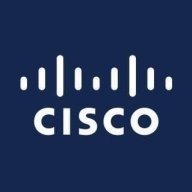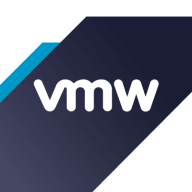


VMware Cloud Director and Cisco UCS Director compete in the cloud services management category. VMware Cloud Director seems to have the upper hand due to its robust virtualization capabilities and extensive features that support both public and hybrid cloud environments.
Features: VMware Cloud Director offers a robust cloud services platform with extensive virtualization, scalability, and integration capabilities with public and hybrid clouds. Key features include vCenter Operations for monitoring and vSphere integration for seamless operations. Cisco UCS Director is integrated into Cisco solutions, providing centralized management for those environments, particularly beneficial in Cisco-heavy infrastructures.
Room for Improvement: VMware Cloud Director could enhance user interface, platform maturity, and integration with public clouds. Users also raise concerns regarding pricing and version compatibility. Cisco UCS Director would benefit from improved third-party integration, more intuitive UI, and enhanced automation capabilities to expand its utility beyond Cisco-centric environments.
Ease of Deployment and Customer Service: VMware Cloud Director supports various deployment models including public, private, and hybrid clouds, with generally strong customer service, though some report slow technical support responses. Cisco UCS Director emphasizes on-premises deployments, receiving positive feedback for its customer service but sometimes faces support challenges in complex settings.
Pricing and ROI: VMware Cloud Director is viewed as costly, but justifiable given its extensive features and scalability, potentially offering a strong ROI through efficient resource management. Cisco UCS Director is also considered expensive, with high costs for software and support, offering less ROI due to limited built-in automation and significant development efforts required.


IBM Turbonomic offers automation, planning, and right-sizing recommendations to streamline resource management, improve efficiencies, and optimize costs across virtualized environments and cloud platforms.
IBM Turbonomic is valued for its capability to optimize resource allocation and monitor virtual environments efficiently. It facilitates automated decision-making in VM sizing, load balancing, and cost optimization for both on-premises and cloud deployments. Users can leverage insights for workload placement, ensure peak performance assurance, and effectively right-size across VMware and Azure. The ongoing transition to HTML5 aims to improve visual and navigational ease, while expanded reporting features are anticipated. Opportunities for improved training, documentation, and integrations enhance platform usability and functionality.
What Are the Key Features?In finance, IBM Turbonomic aids in maintaining platform efficiency during market fluctuations. Healthcare organizations leverage its capability for resource optimization during high-demand periods to enhance patient care support. Retailers use it for planning in peak seasons, ensuring resources align with fluctuating demand to maintain performance continuity.
Cisco UCS Director enables automated delivery of physical and virtual data center resources, empowering data centers to move at the speed of business.
VMware Cloud Director, also known as vCloud Director, is a cloud management tool that offers secure, flexible, and efficient cloud resources to thousands of enterprises and IT teams across the world. The solution serves as one of the leading cloud service-delivery platforms for businesses that want to manage and operate their services effectively. By deploying this solution, companies can benefit from virtualized networking, computing, security, and storage. These benefits can be received in a timely manner, as the infrastructure of the product is operationally ready within minutes and clients do not need to install and configure physical infrastructure.
One of the biggest advantages of vCloud Director is that it allows users to build cloud-ready applications. In several ways, it facilitates the process for developers, including:
vCloud Director Features
This VMware product has various features through which users can virtualize their data and benefit from quality management solutions. Among the popular capabilities of vCloud Director are:
vCloud Director Benefits
VMware vCloud Director offers various benefits to its users. Some of these include:
Reviews from Real Users
Ajit Y., a cloud architect at a computer software company, likes VMware vCloud Director because it is a stable, truly multitenant software and the go-to tool for infrastructure as a service.
Kashif F., a divisional engineer at National Telecom Corporatio, rates vCloud Director highly because the product can be used for infrastructure provisioning without using a platform service.
We monitor all Cloud Management reviews to prevent fraudulent reviews and keep review quality high. We do not post reviews by company employees or direct competitors. We validate each review for authenticity via cross-reference with LinkedIn, and personal follow-up with the reviewer when necessary.